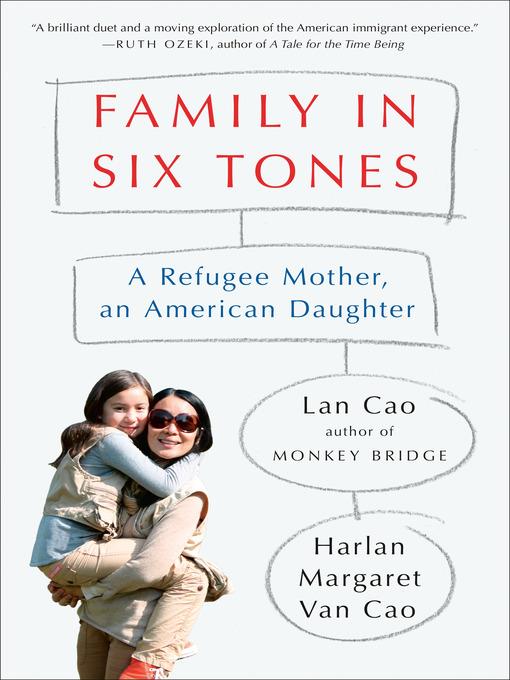
Family in Six Tones
A Refugee Mother, an American Daughter
کتاب های مرتبط
- اطلاعات
- نقد و بررسی
- دیدگاه کاربران
نقد و بررسی

June 15, 2020
A Vietnamese refugee, now a California law professor and novelist, attempts to create a secure life for her American-born child in this uneven dual-perspective memoir. Novelist Lan (The Lotus and the Storm) and her teenage daughter Harlan recount childhood memories: Lan in wartime Saigon witnessing “blackened bodies” in hospitals; Harlan in Virginia in “a nine-thousand-square-foot mansion” in a gated community. The bickering narrative of the overprotective mother and rebellious teen turns dark as Harlan reveals multiple personalities hiding under Lan’s poised surface: “No Name,” is brutal toward Harlan, while six-year-old “Cecile” plays with Harlan. Painful parallels are evident: 13-year-old Lan is expected to stoically adopt to her new life in America, and young Harlan is pressured to say nothing about Lan’s “darker shadow selves.” Their relationship, tempered by Harlan’s father, a constitutional law professor, intensifies after his death. Glimpses of Lan’s years at Mount Holyoke, Yale Law School, and practicing corporate law in Manhattan show a young woman who succeeded despite her burdens; in comparison, Harlan’s experiences are thin. It isn’t until they visit Saigon together that they find common ground. The blended memoir only occasionally works, but in those moments, the effect is powerful and unsettling.

June 15, 2020
An acclaimed Vietnamese-born novelist and her U.S.-born daughter tell the story of their complex relationship and their lives in America. Cao fled Vietnam for the U.S. in 1975, when she was 13. In 2002, she gave birth to the daughter, Harlan, who made her realize she was no longer a lone survivor but rather a new entity comprised of "two beings entwined." In this co-authored story, Cao and Van Cao speak in alternating sections about their experiences in America. Cao writes about being a cultural outsider haunted by excruciating memories of Vietnam that resurfaced after the birth of her daughter. While Van Cao also saw herself as "separated" from others, it was partly because she could "see sounds and feel letters and taste smells." It was also because the overprotective refugee mother who held her hand until she was 11 or 12 had conditioned her "to survive" by taking her to taekwondo classes and pushing her to excel in everything from academics to music. What makes this memoir especially compelling is the way these two separate but linked perspectives illuminate silences or gaps in the stories each woman tells. For example, Cao's probing but emotionally restrained narrative focuses on the facts of her remarkable life: early life in war-torn Vietnam, resettlement in Virginia, college at Mount Holyoke, corporate law work in New York City, marriage to a Duke law professor. By contrast, Van Cao uses her distance from Vietnam to talk openly about her mother's "shadow selves" that emerged in the aftermath of war trauma, elements that Cao only hints at in her own narrative. As it celebrates the mother-daughter bond, this book reveals the added complexities that bring together refugee mothers and their American children while also maintaining a certain unbridgeable distance. An eloquent and affecting multigenerational memoir.
COPYRIGHT(2020) Kirkus Reviews, ALL RIGHTS RESERVED.

























دیدگاه کاربران